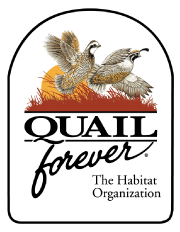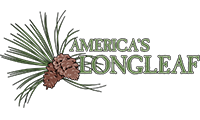General Resources and Publications
In the working lands library, you will find project reports, presentations, peer-reviewed studies, and more.
Poster Presentation: Seeing Past the Green: Quantifying the Characteristics of High-graded Forests
Download the Poster Presentation for "Seeing Past the Green: Quantifying the Characteristics of HIgh-Graded Forests
Seeing past the green: Structure, composition, and biomass differences in high graded and silviculture-managed forests of similar stand density
Forests of the eastern United States (US) mostly comprise a mix of stands managed following silvicultural principles and stands managed with exploitative timber harvesting practices. These stands can have similar stand densities (e.g., basal area per hectare) but vary vastly in structure, composition, and biomass and carbon storage. High grading, a prevalent exploitative timber harvesting practice in the eastern US, is of particular concern because it can negatively affect future forest health and productivity. This study quantifies differences in forest structure, composition, and biomass and carbon storage between high graded stands and stands that received a seed/establishment cut of a uniform shelterwood regeneration sequence treatment, which is a comparable and well-established silvicultural method used to regenerate mixed-oak forests. It focuses on mixed-oak forests (mixed-Quercus), where the effects of high grading have been understudied, and uses a sample with broader spatial coverage than previous studies. The sample comprised nine stands that were known to have been high graded 8–15 years ago and nine stands that received the seed/establishment cut of a uniform shelterwood regeneration sequence. Stand were systematically sampled using fixed-area plots. Field measurements were collected and used to calculate metrics describing forest structure and function. The structure of high graded stands was characterized by a higher proportion of trees with poor health and/or form compared to shelterwood stands, with 18.3 % less acceptable growing stock and trees with lower crown compaction. Diameter distributions of high graded stands were characterized by numerous small trees and few large-diameter trees. Spatial variability of overstory trees was contingent on the tree size range evaluated, with a larger variability of sawtimber-sized trees (trees ≥ 29.2 cm in diameter at breast height) in high graded stands. High graded stands also had 2.2 times fewer oak trees (Quercus spp.) in the overstory canopy, 17,897 fewer seedlings per hectare (ha), and 45 Mg/ha less biomass than shelterwood stands. These results indicate that high grading generally degrades mixed-oak forests and impairs their long-term capacity to supply vital ecosystem services such as habitat for specific wildlife species, carbon storage, and high-quality wood products.
Decision Support Tools to Inform the Rehabilitation and Management of High Graded Forests
Abstract Numerous forests in the eastern United States have been degraded due to past exploitative timber harvesting known as high grading. High graded forest stands may not improve without active re- habilitation and may require targeted silvicultural treatments. This study focuses on high graded mixed-oak (mixed-Quercus spp.) stands and aims to develop a model that can identify past high grading and to determine modifications that may improve forest management recommendations provided by the prominent decision support tool, SILVAH. We present a model that uses standard forest inventory measurements and does not require knowledge of preharvest stand conditions to predict with moderate to high accuracy whether a stand was high graded, which could be par- ticularly useful for nonindustrial private forests. Results indicate that modifications to SILVAH may be necessary to improve its utility for prescribing silvicultural treatments in high graded stands. Study Implications: High graded forest stands are often not readily apparent and likely require specific forest management practices. We present a tool that uses standard forest inventory meas- urements to predict past high grading, which can be used to inform and prioritize forest manage- ment decisions. We also present suggested modifications to the prominent decision support tool, SILVAH, that may improve its ability to prescribe optimal silvicultural treatments for high graded stands. Results from this study provide forestry professionals/landowners working in the mixed- oak forests of the northeastern United States with tools to inform forest management decisions that aim to return degraded stands to healthier and more productive states.
Golden-winged Warbler Landowner Outreach Mailer Template
This editible mailer template from the Golden-winged Warbler Working Group is a great way to generate private landowner interest in your area! It outlines the importance and benefits of Golden-winged Warbler habitat and how landowners can participate or get more information.
A Function-Based Framework for Stream Assessment and Restoration Projects
Download the Functional Framework for Stream Assessment and Restoration. This is the science-based development of the original function-based framework that is the basis for the SQT.
SQT Expert Feedback - RECORDING
Recording of a meeting with experts in Hellbender research to gather feedback on the draft Hellbender Stream Quantification Tool (SQT).
NRCS WLFW Outcomes Assessment 2012-2018 (released 2021)
An outcomes assessment report completed under a contract to Dr. JJ Apodaca from NRCS-WLFW. This document is being shared with conservation partners but broad or public sharing is not approved.
Do Review Papers on Bird–Vegetation Relationships Provide Actionable Information to Forest Managers in the Eastern United States?
Herein, we focus on a common problem of the science–practice interface in the context of forest wildlife habitat management. That is, are wildlife scientists providing information that is both relevant and specific enough to be actionable in real-world, evidence-based forest management contexts?
What evidence exists for landbird species-environment relationships in eastern temperate and boreal forests of North America? A systematic map protocol
In this systematic map, we propose to answer the review question: what evidence exists for bird species-environment relationships in eastern temperate and boreal forests of North America?
Map of Fescue Belt
Map of fescue belt within the U.S. superimposed over map of states participating in WLFW NOBO, Grasslands, and Savannas
BBS Hotspots for Northern bobwhite
Hot spot map based on breeding bird survey data for northern bobwhite, as of 2011.
Major Land Uses in WLFW NOBO, Grasslands, and Savannas
Major land use types within the boundaries of the WLFW Northern bobwhite, Grasslands, and Savannas framework.
Map of Row Crops Produced in NOBO Range
Row crop production within WLFW Northern bobwhite, Grasslands, and Savannas framework boundaries.
State Priority Areas for WLFW NOBO, Grasslands, and Savannas
Beyond the national boundaries that each NRCS state offices selected, some chose to also identify priority areas that will be used in project ranking. (priority area shapefiles not uploaded yet!)
National Project Boundaries for WLFW-NOBO, Grasslands, and Savannas
Attached shapefiles combine all of the state input to create one cohesive, national map for the framework. Some states also identified priority areas within these boundaries, and those are posted in this same folder.


























